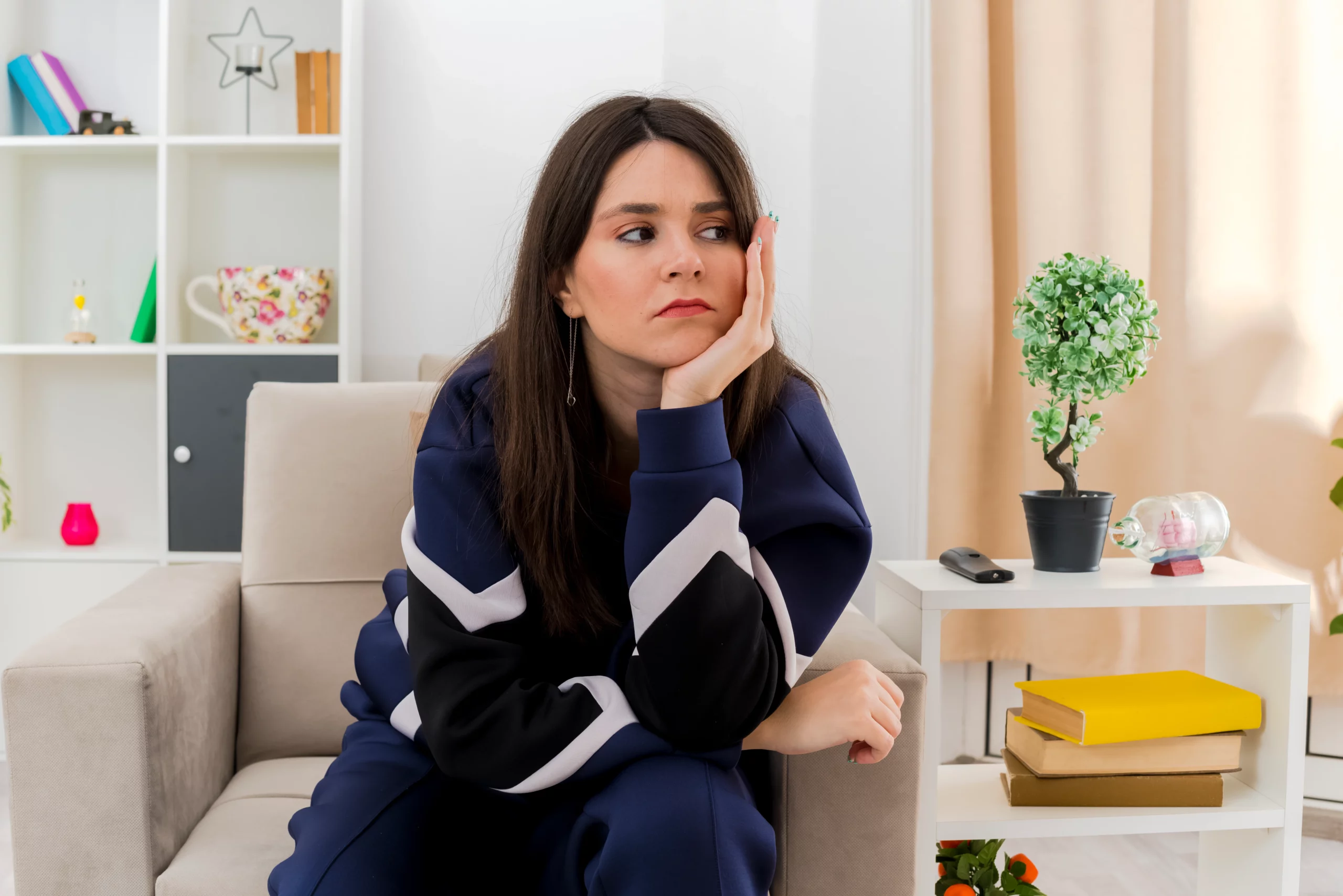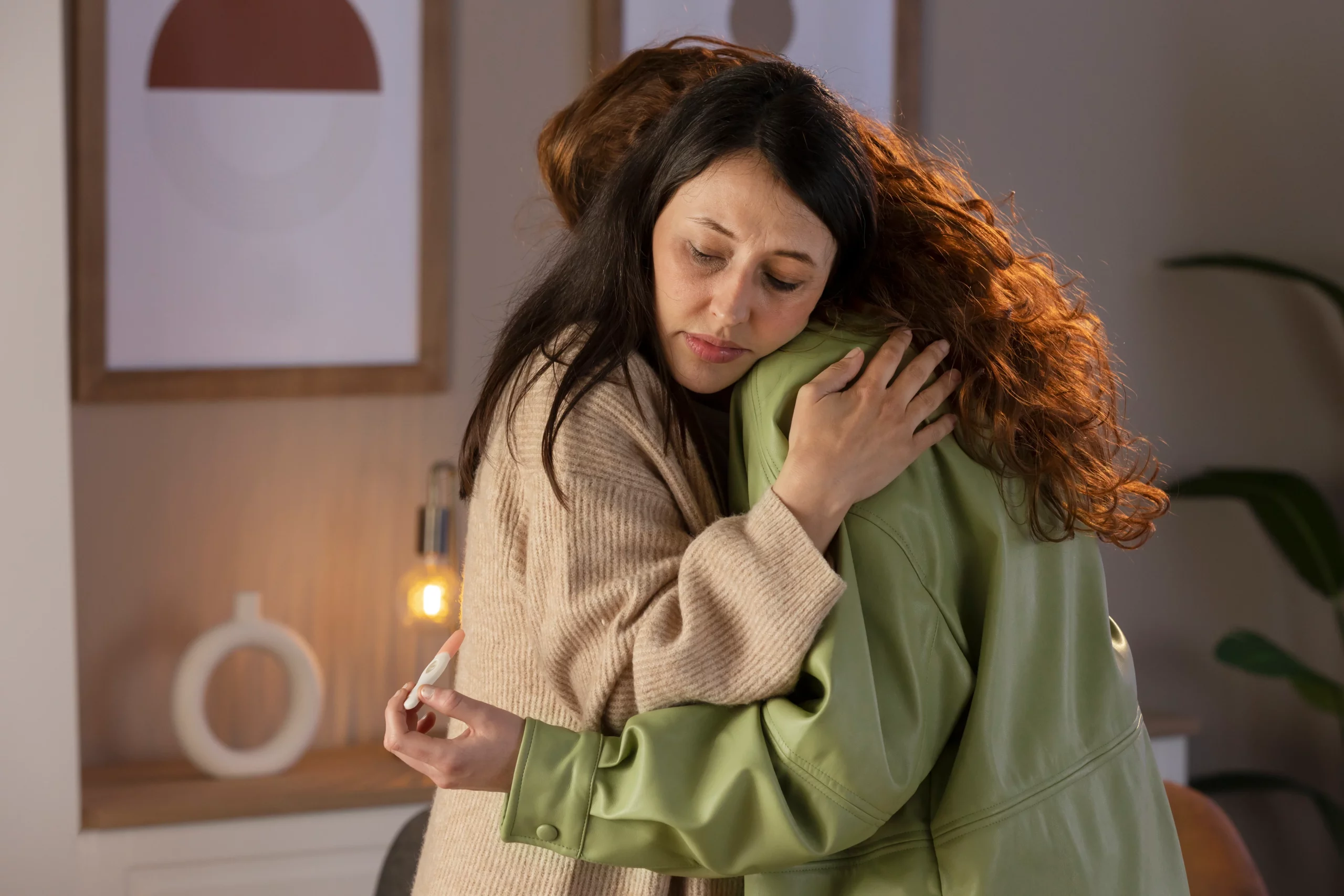Beating the Winter Blues: A Comprehensive Guide to Managing Seasonal Affective Disorder
As the vibrant fall foliage gives way to bare trees and cooler weather, many people start to experience a shift in mood as like Seasonal Depression . Shorter, darker days can lead to feelings of fatigue, sadness and lack of motivation in over 10 million Americans each winter.
This common seasonal reaction is known as seasonal affective disorder, or SAD. While it’s normal to have some “winter blues,” up to 20% suffer from difficult clinical depression symptoms annually tied to changing seasons.
If you’re noticing your outlook worsening this time of year, know that you don’t have to endure another winter of feeling down. This comprehensive guide outlines proactive lifestyle adjustments and treatment options all aimed at relieving seasonal depression so you can thrive all year long.
What is Seasonal Affective Disorder?
Seasonal affective disorder (SAD) is characterized by depressive episodes occurring at the same time annually, most commonly late fall through early spring. This form of clinical depression is associated with decreasing daylight exposure.

“Seasonal depression is triggered by reduced sunlight in fall and winter months disrupting the body’s internal circadian rhythms,” explains Dr. Rebecca Blue, Psychiatrist and Professor at New York University’s Langone Medical Center. “This includes fluctuation in mood-influencing neurotransmitters like melatonin and serotonin production.”
Key Facts and Statistics on SAD:
- Impacts over 10 million Americans per year
- Affects more women (80%) than men
- Five times more prevalent than typical non-seasonal depression
- Average age of onset is early 20s to 30s
- Greatest number of cases found in northern latitudes with harsh winters
- Symptoms peak in January and February for winter SAD sufferers in the Northern Hemisphere
- Prevalence drops as low as 1% in warm locations like Florida and Hawaii
Who is Most at Risk for Experiencing Seasonal Depression?
According to Dr. Blue, those with the following characteristics are at increased risk of showing symptoms:
- Family history of mood disorders or clinical depression
- Preexisting mental conditions like anxiety or eating disorders
- Suffer from mild to moderate depression year round
- Residents at northern latitudes with longer, harsher winters
- Women going through hormonal shifts like postpartum or perimenopause
- Anyone with disrupted sleeping, eating patterns around seasons
Common Symptoms Associated with Seasonal Affective Disorder:
SAD takes a toll both mentally and physically throughout the darker winter months:
Emotional/Mental Symptoms:
- Sadness, hopelessness, numbness
- Lack of interest and engagement
- Withdrawal from social interaction
- Irritability and increased anxiety
- Difficulty concentrating
- Lack of productivity and motivation
- Disinterest or dissatisfaction with life/career
Physical Symptoms:

- Fatigue/low energy/lethargy
- Difficulty waking or achy feeling during day
- Increased appetite for sugary, starchy comfort foods
- Weight gain from increased cravings and overeating
- Insomnia or oversleeping
- Decreased physical activity and exercise
Left untreated, these SAD symptoms can steadily worsen and negatively impact quality of life over the winter months. As noted in the American Journal of Health Behavior Study, “fulfilling responsibilities related to work, school, interpersonal relationships can become difficult or impaired for those dealing with seasonal affective disorder and winter blues.”
Fortunately, relief is possible with commitment to proven treatment plans.
Using Light Therapy for Seasonal Mood Disorders
Exposure to bright artificial light which mimics natural outdoor light is an effective first-line treatment approach recommended for most dealing with SAD. This targeted phototherapy typically uses a light therapy box or light visors to administer daily light sessions.
“In numerous gold-standard clinical studies, light therapy shows substantial mood improvement in 60-80% of seasonal depression sufferers,” confirms Dr. Angela Wu, Director of Psychology Clinical Research at Columbia University Department of Psychiatry.
So how does light therapy work exactly? The illuminated rays of specialized SAD lamps help reset the body’s out-of-whack circadian rhythms and hormone production. Light activates brain pathways controlling sleep, mood, focus, alertness. This leads to relief from the emotional and physiological symptoms associated with seasonal affective disorder.
Key Light Therapy Tips for Effectively Managing SAD:
When: Timing matters. Most experts suggest early morning light to help regulate your bio clock. But schedule sessions whenever most convenient for consistency.
Duration: Aim for 30-60 minutes daily. Results can take 2+ weeks. Stop if side effects like eyestrain, headache occur.
Intensity: Look for 10,000 LUX brightness. Position 12-18 inches from face, glancing periodically.
Where to Buy: Many affordable SAD lamp options online. Carex Day-Light, Circadian Optics, Verilux HappyLight are top-rated.
Other Models: Light boxes, floor or desk lamps, light visors worn like glasses, even light alarm clocks. Determine form factor preference and settings.
Of course, speak to your doctor to personalize your phototherapy treatment plan for optimal relief of SAD symptoms with regular use over time. Natural light exposure remains important too.
“While light therapy effectively minimizes seasonal depression severity for many, lifestyle interventions shouldn’t be overlooked as complimentary management strategies,” advises Dr. Wu. “An integrative approach is best long-term.”
Lifestyle Adjustments to Alleviate Seasonal Depression Naturally
Beyond clinical light therapy administered by a professional, adopting targeted daily lifestyle changes at home can further ease seasonal depression. Small consistent steps to brighten your environment, increase comforting movement rituals, nourish your body optimally, connect socially, and shift mindset can help alleviate SAD.
1. Obtain More Natural Sunlight Exposure
Bundling up to spend some time outdoors remains essential during winter months. Even just 20-30 minutes of walking or sitting in the fresh air and daylight can lift mood while providing vitamin D absorption.
On nicer days, have lunch outside or schedule outdoor recreation like snowshoeing with friends on weekends. Open blinds, position near windows daily in your home and office.
Maximizing mindful exposure to what little natural daylight occurs in winter prevents further circadian imbalance while relieving emotional and physical depression symptoms.
2. Incorporate Moderate Exercise Routinely
Physical activity has well-documented antidepressant effects by releasing those feel-good endorphins and boosting circulation and oxygen flow. Just 30 minutes several times weekly can improve seasonal depression.
Stay motivated by taking group classes like yoga, joining a gym, hiring a personal trainer or confiding in a friend to be your exercise accountability partner. Mini workouts in your living room, walking the mall or snow activities also get you moving.
3. Follow a Nutritious, Seasonal Affective Disorder Diet
Sticking to a healthful anti-inflammatory diet fuels the mind and body while balancing blood sugar highs/lows that influence mood regulation.
Fill up on phytonutrient-packed produce like sweet potatoes, squash, dark leafy greens, citrus, nuts, seeds, even cold weather superfoods like turnips, beets, mushrooms, cabbage, apples.
Opt for wild caught salmon, yogurt, eggs, turmeric lattes and lower glycemic grains like farro, quinoa, oats. Stay hydrated, minimize alcohol and processed foods that exacerbate SAD fatigue and cravings.
Consider mood-friendly supplements like omega-3s, Vitamin B complex, Vitamin D3 (2000 IU strength), and magnesium.
4. Maintain Social Connection
It’s tempting to isolate when feeling down but loneliness and disconnection only worsen seasonal depression. Combat it by scheduling video calls, participating in an online SAD support community, joining a book club that meets remotely.
Single? Use a dating app like Bumble BFF mode to find friends. Have SO coffee dates. Sign up for a crafting or cooking lesson via Zoom. The options for virtual interaction are endless and make staying engaged in winter possible.
5. Develop Hobbies That Spark Joy
Another way to actively minimize inactive time home alone is by doing activities you find intrinsically rewarding, meaningful and align with your needs for self-care this winter.
Give adult coloring books a try, learn piano using an app, tackle DIYs around the house, decorate for festive holidays ahead, sign up for MasterClass to learn from experts in topics of interest, grow herbs/plants, adopt a pet, regularly journal thoughts. Let your creativity flow.
Staying motivated and being gentle with yourself on harder days is key. The project is less important than the process of showing up daily doing what nourishes your mind, body, spirit.
6. Seek Additional Seasonal Affective Disorder Support
Lifestyle measures like the above alongside clinical light therapy may be enough for many dealing with mild SAD symptoms. But those with more severe or stubborn seasonal depression should consult their doctor.
Cognitive behavioral talk therapy helps reframe negative thought cycles exacerbated by winter’s gloom. Antidepressant medication can address chemical imbalances so one feels more even year-round. Knowing your options brings relief.
Strategies to Shift Unhelpful Thinking Habits
Altering small daily habits around movement, nutrition and socializing positively impacts seasonal mood lows stemming from limited winter sun. But thought patterns also transform outlook. Here are proven cognitive-based tips for reframing a snowballing pessimistic mindset:
Be Present: Stay grounded in the current moment – notice details using all five senses. Depressive thinking fixates on the negative past or projects worries about the hopeless future.
Challenge Distortions: Identify catastrophizing mental filters like “nothing matters when I feel this way” or “I can’t accomplish anything in winter.” Talk back with a constructive voice and realistic perspective.
Reframe Setbacks: When you have an off day, rather than proof you “can’t beat SAD,” see it as data or opportunity for self-compassion, adjustment. Progress happens in a nonlinear path.
List Blessings: Gratitude heals. Keep a daily journal of a few things you appreciate about health, loved ones, simple joys and privileges. Notice the good.
Affirm and Visualize: Speak kind messages of hope, capable coping and resilience to yourself even if doubting. And picture exactly how you want to feel – vibrant, engaged, connected.
As indicated in a meta-analysis in the Journal of Clinical Psychology, “cognitive-behavioral therapy demonstrates large, significant effects on reducing depressive symptoms associated with seasonal affective disorder.”
Mindset matters when managing SAD. Be patient and persist practicing the strategies above and your thinking and mood will shift as the longer, brighter days return.
Conclusion and Key Takeaways on Coping with Seasonal Depression:
As the vibrant fall foliage gives way to bare trees, shorter days and cooler weather, many begin to experience symptoms of seasonal affective disorder (SAD). Difficulty concentrating, sadness, low motivation, fatigue and lack of interest in normal activities can plague over 10 million annually.
Luckily there are effective solutions and support. Combining daily light therapy sessions, lifestyle adjustments like exercise, nourishing food, social connection, new hobbies and cognitive reshaping of thought patterns can ease even moderate seasonal depression into remission.
Additional counseling or medical intervention may be pursued for more stubborn symptoms with a doctor’s guidance. Know that small consistent steps – not perfection – are key for progress.
If this time of year tends to dampen your mood and functioning, have patience and persistence trying one new recommendation a week from the comprehensive suggestions above. Support others on a similar path when possible. With compassion for the inevitable ups and downs, you can get through this season feeling healthier and happier than ever before.
The future looks bright, my friend. Bundle up and embrace it.

